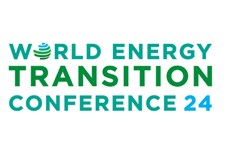Benefits of modular process units
Published by Callum O'Reilly,
Senior Editor
Hydrocarbon Engineering,
Traditionally, refinery units are constructed on-site in a stick-built (site fabricated) fashion. Another approach is to completely build a modular process unit off-site in a controlled environment and provide delivery of a complete system. In high-pressure letdown, modules feature an excellent design at reduced costs, increased safety, and push-button availability, in one of the most complicated operations in a heavy oils unit. Modules drive down both CAPEX and OPEX.
Engineering cost savings
A modular design is optimised by the original equipment manufacturer (OEM), who has a better understanding of the particular process within the unit. For example, a properly engineered and optimised module may be built with 10 in. pipe, while the same process in a stick-built engineering, procurement and construction (EPC) design would typically use larger pipe, even up to 18 in. This overly conservative approach by stick building adds cost with no performance gains over a module. The expense for larger steel pipe, welding, inspection, pipe fittings, and associated valves necessary with a stick-built unit are not required in a modular construction. This reduces the overall cost to the end user when opting for a module, and a footprint reduction of up to 40%.
In a stick-built project, the engineering essentially starts over for each project, but not for an OEM module. Valves, piping and other components that are required, regardless of the fabrication method, account for approximately 75% of the total cost. This leaves 25% for engineering and other costs that vary from stick-built to module. Since each stick-built unit is custom, the engineering is created new every time. However, with a module there are many pieces of the core design that do not change from one project to the next. This reduces engineering costs.
Improved safety
Modular units improve overall plant safety in three ways. Firstly, the module is tested as a complete assembly vs individual components (which leads to less operational risks and a quicker start-up) before becoming integrated with the unit, and rigorously verified using finite element analysis (FEA) software. Every conceivable operating mode – from both trains on the module being hot, to one train is hot while the other is cold, to both trains being cold – are analysed and the design optimised to accommodate these very different modes of operation. This improves the reliability of the units to ensure the following:
Written by Mike Berckenhoff, MOGAS Industries Inc., USA.
This article was originally published in the June 2021 issue of Hydrocarbon Engineering magazine. To read the full article, view the June issue here. And to sign up to receive a free regular copy of the magazine, click here.
Read the article online at: https://www.hydrocarbonengineering.com/special-reports/21062021/benefits-of-modular-process-units/
You might also like
Viridi Energy signs 20-year agreement with Énergir
Viridi Energy, a renewable natural gas (RNG) platform, has signed a 20-year offtake agreement with Énergir, L.P.


